|
|
By Sandy, on June 29th, 2009
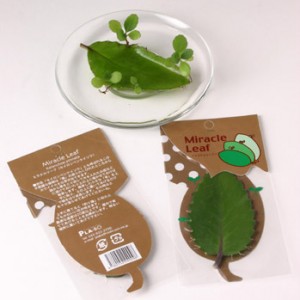
A few weeks ago, I saw a nicely packaged leaf called Miracle Leaf in the Life Division of CitySuper, an upscale supermarket in Hong Kong. It is selling for HKD $25 (around USD $3.5). At the back of the package, it says
Baby leaves come out from the narrow parts of the MOTHER leaf.
Put the leaf on the water or on the soil.
Treat well and small bellflowers come out. Suitable temperature is over 20 centigrade.
Place the plant in a warm well-lit place.
Continue reading Miracle Leaf – Kalanchoe Pinnata
By Sandy, on June 7th, 2009
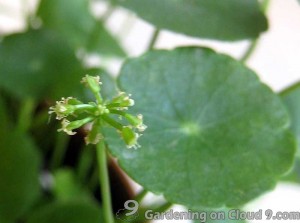 When I found my Chinese Money Plant, Pilea peperomioides, blooming with some tiny white inflorescences last month, I knew that I was wrong when I told Louise that Chinese Money Plants never blossom … When I found my Chinese Money Plant, Pilea peperomioides, blooming with some tiny white inflorescences last month, I knew that I was wrong when I told Louise that Chinese Money Plants never blossom …
Besides Louise, I have a few other friends who guessed the plant that I used in my tabletop garden – Money Bowl is Nasturtium. Actually, it could be quite confusing since both plants have leaf stalks growing from the center of the leaf disks. Yet, it will be very easy to separate the two plants when they blossom.
Continue reading Chinese Money Plant & Nasturtium
By Sandy, on June 4th, 2009
 One of my highlights in gardening last month is my discovery of Blotanical. I like it. It’s fun. This social networking site for gardeners makes it much easier for me to meet other gardening bloggers with similar interests and experience. One of my highlights in gardening last month is my discovery of Blotanical. I like it. It’s fun. This social networking site for gardeners makes it much easier for me to meet other gardening bloggers with similar interests and experience.
Blotanical has a tight and friendly community where its members will send messages to newcomers and make them feel welcomed. And there are several neat functions in Blotanical that make surfing this social networking site a fun and helpful experience. Continue reading Blotanical – The Meeting Place for Gardeners
By Sandy, on May 31st, 2009
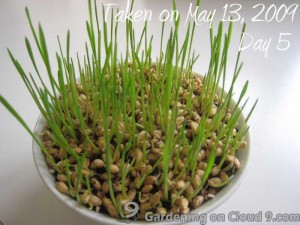 Because of the mold that I have found on my wheatgrass, I have done some research on this subject, and have learned that mold is actually quite a common problem when growing wheatgrass. And while mold doesn’t look very appetizing, it isn’t harmful to our health. As long as we cut the wheatgrass way above the mold that is grown on the soil, and rinse the grass, it is safe to juice them or give them to our pets as snacks (a large number of young grass species, including wheatgrass, can be fed to pet, check Cat Grass or Wheatgrass? for more details). Because of the mold that I have found on my wheatgrass, I have done some research on this subject, and have learned that mold is actually quite a common problem when growing wheatgrass. And while mold doesn’t look very appetizing, it isn’t harmful to our health. As long as we cut the wheatgrass way above the mold that is grown on the soil, and rinse the grass, it is safe to juice them or give them to our pets as snacks (a large number of young grass species, including wheatgrass, can be fed to pet, check Cat Grass or Wheatgrass? for more details).
Continue reading How to Prevent Mold When Growing Grasses in Containers
By Sandy, on May 28th, 2009
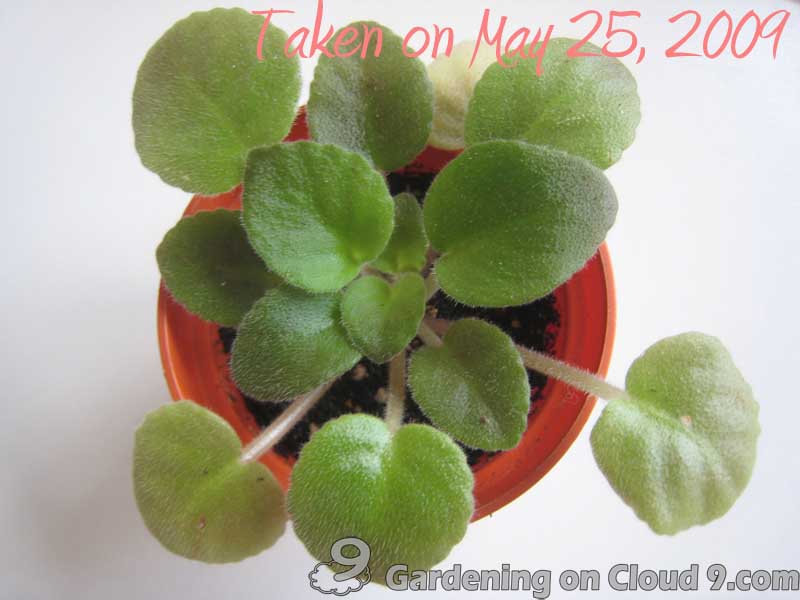
Yes! After repotted my Ness Fantasy Gold to a smaller container for about six weeks, I have finally found a sign of life! My plant is finally growing! This has confirmed that my guess is right. Not only did I overwater my African violet, the ridiculously huge pot probably had caused rotten . . . → Read More: O Yes! Finally Started Growing!
By Sandy, on May 22nd, 2009
 When I was doing some research on the benefits of cat grass for cats and other pets, I got all confused and was starting to wonder if what I am growing now is actually not cat grass. When I was doing some research on the benefits of cat grass for cats and other pets, I got all confused and was starting to wonder if what I am growing now is actually not cat grass.
After more research, I have learned that the term “cat grass” is quite a loose term. In many websites, cat grass actually includes a large number of young grass species. Common oat, flax, barley, and even catnip (Nepeta cataria) which is not even a grass at all, are called cat grass in many websites.
Continue reading Cat Grass or Wheatgrass?
By Sandy, on April 18th, 2009
While we are familiar with the common names of our houseplants, most of us do not know the botanical name of our plants. This is totally fine, for it is absolutely not necessary to memorize those long, daunting botanical names. We can just use the botanical names for reference when looking up information of our plants in guidebooks or websites. Here are the reasons why we use botanical names for plant identification.
Botanical Name of a Plant – The Breakdown
The botanical name of a plant is composed of two major parts, the genus and the species of the plant. For simplicity’s sake, genus is the family and species is a member of the family.
Continue reading Botanical Name – What is in the name?
By Sandy, on April 18th, 2009
While common name is so much easier for us to use, there are several good reasons for us to use botanical names for plant identification.
Botanical Name – Unique to Only One Plant
Every plant has at least one unique botanical name (or scientific name or Latin name) to it. This means that every botanical name refers to one and only one plant. Some plants may have more than one botanical name, yet this is not very common. To avoid confusion, it is better to use botanical name for plant identification.
Continue reading Why Do We Use Botanical Names?
By Sandy, on April 12th, 2009
When we pot our plant for the first time after getting it from a garden nursery, or repot our houseplant when it has outgrown its container, we have to choose a new container with the right size for our plant.
Using Garden Containers Too Big
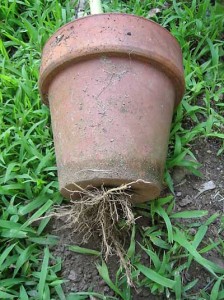 When a houseplant gets too large for its container, its roots will start circling around inside the container, and restricting themselves. If our houseplants appear to dry out more quickly than they used to, but are otherwise healthy, the plants are probably pot bound. Continue reading Containers for Houseplants – Size Matters! When a houseplant gets too large for its container, its roots will start circling around inside the container, and restricting themselves. If our houseplants appear to dry out more quickly than they used to, but are otherwise healthy, the plants are probably pot bound. Continue reading Containers for Houseplants – Size Matters!
By Sandy, on April 10th, 2009
Ok! Here is a lesson that I have learned recently – Don’t try to save ourselves some work by planting our houseplant in a container too large, for we could damage or even kill our plants!
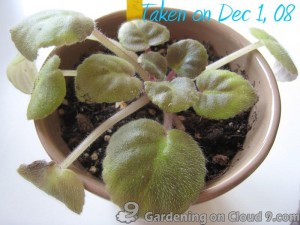 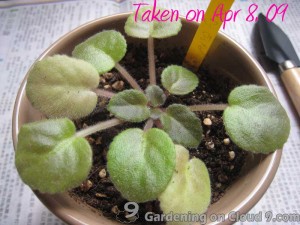
Continue reading My African Violet Doesn’t Like Its Big House
|
|


 One of my highlights in gardening last month is my discovery of
One of my highlights in gardening last month is my discovery of 

 When a houseplant gets too large for its container, its roots will start circling around inside the container, and restricting themselves. If our houseplants appear to dry out more quickly than they used to, but are otherwise healthy, the plants are probably pot bound.
When a houseplant gets too large for its container, its roots will start circling around inside the container, and restricting themselves. If our houseplants appear to dry out more quickly than they used to, but are otherwise healthy, the plants are probably pot bound. 




Recent Comments